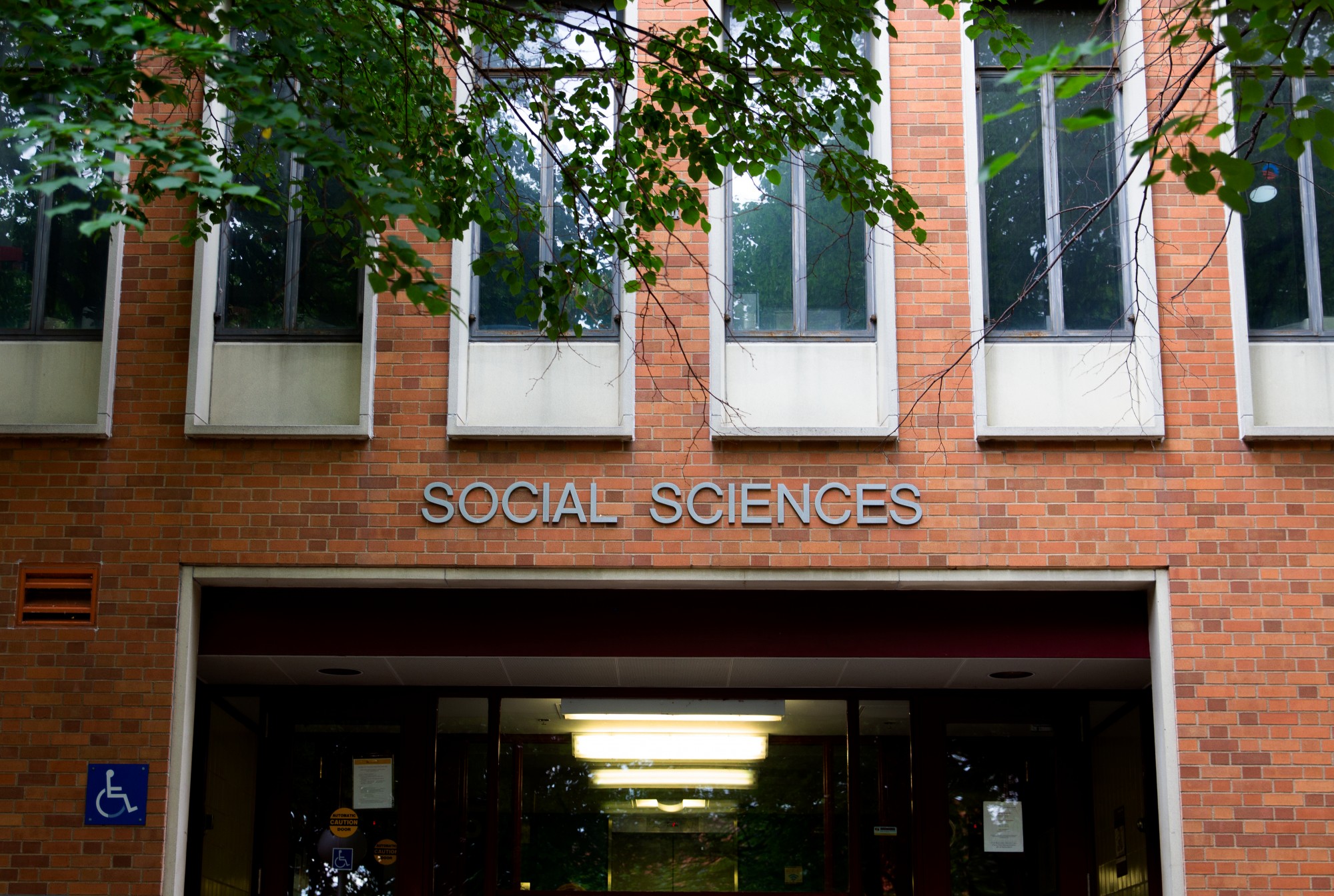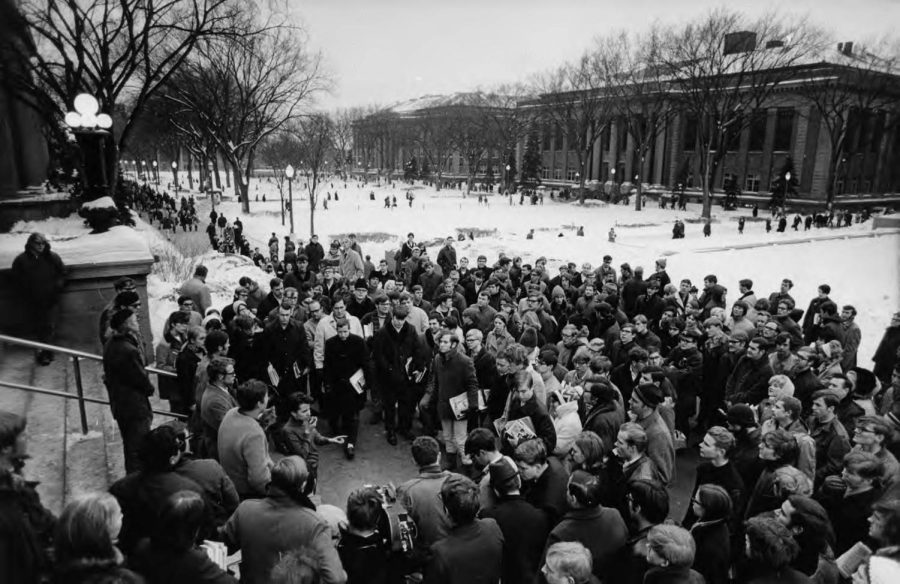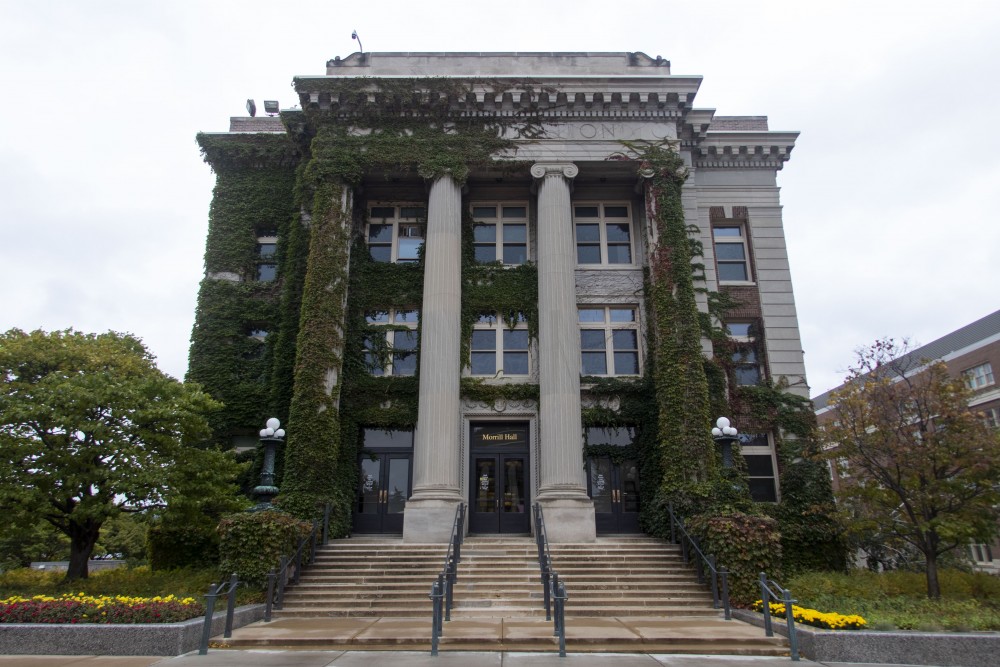Editor’s note: Parts of this story have been updated to include more context and accurate language about the preservation process.
The intersection at 38th Street and Chicago Avenue has become a place of remembrance since Minneapolis police killed George Floyd in May. A giant fist points to the sky from the middle of the intersection and a mural is painted on the wall around the corner from where Floyd was killed.
The space has been occupied for more than five months, and as snow accumulates, volunteers in George Floyd Square have worked to maintain a safe space for visitors throughout the winter. Teams have been formed for preservation, medical assistance and further winterization throughout the intersection.
Now the square is dotted with fire pits to keep visitors warm, and volunteers have shoveled repeatedly since snow first began to drop.
Minneapolis native and lead caretaker Jeanelle Austin expressed the importance of preserving George Floyd Square for the Black community to “tell our own stories.”
Preservationists are mindfully caring for the offerings at the memorial, as “these are people’s expressions of pain and hope that they have left in their grief,” Austin said in an email to the Minnesota Daily.
Negotiations about the fate of the intersection have been ongoing between the city and community, but there’s been a “lack of movement” on the city’s part, said Andy Browne, Minneapolis resident and volunteer at George Floyd Square.
“I think that they’re very aware that the way in which they engage the reopening of the streets and all those things is very important. … We’re keenly aware that at any point they can come in with bulldozers and knock us over,” Browne said.
Twenty-four demands are plastered around the intersection, ranging from holding the trial in Minnesota for the four police officers involved in killing George Floyd to recalling Hennepin County Attorney Mike Freeman.
“We’re playing this game with the city, and they’re playing the same game with us,” Browne said, referring to the lack of clarity around the city’s plan for the intersection. “At some point somebody’s gonna break, and I can tell you right now it’s not gonna be us.”
Browne said that he believes that the recognition of racial injustice against the Black community is a matter of life and death for his “Black brothers and sisters.”
As time passed and volunteers continued to occupy 38th and Chicago, protests evolved into community work dedicated to rebuilding and healing.
Originally, the city said that the area would be taken back on Sept. 17. When that date came and went, Browne said “nothing happened.”
“Stepping up to the plate”
More than 100 volunteers make up the group devoted to caring for the space where thousands of visitors have come to pay their respects.
Volunteers describe the square as the start of a greater movement where visitors come to remember lives lost to police brutality and reflect on the future work to be done in Minneapolis.
“It’s sad that it takes such a horrific incident to humble a lot of souls,” said Kia Bible, a co-founder of the square’s medical team, 612-MASH. “But at the same time, it’s just beautiful to watch it all come together.”
Medical volunteers organized as services were needed during the protests, which led to the formation of 612-MASH. Many have stuck around throughout the following months to offer free medical support at George Floyd Square.
“It was the community pulling itself together and stepping up to the plate,” Bible said.
Bible said 612-MASH started with a focus on emergency room-like activities: tending to wounds and trauma care inflicted during the riots. Today, their duties have shifted toward helping those without insurance and mental health care. The medical team doesn’t turn anybody away.
More homeless people have come around the square as the city has evicted nearby encampments. Bible said the “med shed” has provided them with kits that include blankets and hand warmers to face the harsh winter months.
“We’re taking more of a non-traditional approach to making sure that we’re ‘boots on the ground’ and building a relationship within the community so that they trust what we’re saying and what we’re doing.”
When the 612-MASH medical tent burned down last month, the team lost all of their supplies. The cause of the fire is unknown. Within a week and a half, volunteers built a shed in place of the tent and restocked their supplies with the help of local hospitals and volunteer medics.
Preserving a moment
Austin, who grew up two blocks away from what is now George Floyd Square, flew home from Texas after hearing news of Floyd’s death and the beginning of the protests in her very backyard.
When Austin arrived in Minnesota, she began protesting in the streets. As the protests calmed down, she began picking up remnants and signs so that visitors could better see them. For weeks, in the early morning hours, she saw many other people in the square doing the same.
“The machine keeps going,” Austin said.
Over the course of the summer, a team of nearly 25 people gradually formed to tend to the memorial and take care of the offerings that have been laid in the square — everything from art, protest signs and burnt wreckage from fires. Before the group was organized, the offerings were in the street and were later brought to an abandoned bus station for temporary storage so as to keep them from being thrown out.
“The smallest scrap of paper or the smallest Post-It note written in crayon has been saved,” said Browne. “Those things that were saved are all going to be a part of that story.”
As the cold has set in, Pillsbury House and Theater offered a classroom for safe storage. About 2,500 items have been salvaged so far.
Each day, the preservation team comes to their shift at the square and evaluates what is needed, like shoveling, tending to the plants or placing offerings in storage.
They show up every day of the week in rain, sleet or snow.
“It’s not looking at the winter as an adversary to the protests, but a part of the protests,” Austin said. “The environment is very much so a part of this. The ground bore witness to the death of George Floyd.”
Community members erected a greenhouse to preserve the more than 350 potted plants that have been laid at the memorial. The group is exploring how to strengthen the greenhouse to withstand the winter.
“You walk inside of there and it was above freezing and it smelt like spring … it was this really big juxtaposition between reality and like not reality,” Browne said. “In some sense, the desolateness of winter and the hope of spring all like happening at once.”
Austin has worked closely with the Floyd family to create the George Floyd Global Memorial Fund (GFGMF) to continue telling his story, bringing the community together and to establish educational resources for future generations.
Austin received an email from Mayor Jacob Frey that expressed the City of Minneapolis’ desire to be co-creators of the GFGMF. She said that it is for the community to decide how they will remember Floyd and not the city that employed the person who killed him.
She said that this memorial will represent the pain, grief and hope of the people.
“You can’t be the supervillain and the superhero,” Austin said, “The people get to decide what the memorial is.”
Correction: A previous version of this story misstated the number of spaces where the offerings were stored.



















